Double Agent (35 page)
Authors: Peter Duffy
Tags: #Biography & Autobiography, #Historical, #History, #Military, #General, #World War II, #United States, #20th Century, #Political Science, #Intelligence & Espionage

THE GLORY HOUND—FBI special agent Leon G. Turrou,
right,
botched the investigation that followed Gus Rumrich’s arrest, which didn’t prevent him from writing a bestselling book about the expansiveness of Nazi operations in the United States that served as the source material for Warner Bros.’
Confessions of a Nazi Spy
, starring Edward G. Robinson,
left
. The 1939 film was calculated to inflame the public into believing that German agents were everywhere.
right,
botched the investigation that followed Gus Rumrich’s arrest, which didn’t prevent him from writing a bestselling book about the expansiveness of Nazi operations in the United States that served as the source material for Warner Bros.’
Confessions of a Nazi Spy
, starring Edward G. Robinson,
left
. The 1939 film was calculated to inflame the public into believing that German agents were everywhere.

THE PIONEER—Everett M. Roeder,
second from right,
was a high-level engineer at the Sperry Gyroscope Co., where he first began developing precision weapons systems in 1913. When Sebold first met him in a train station parking lot on Long Island in 1940, he’d been passing information to the Nazi regime for four years. Roeder was blind in his right eye, “which gives it a peculiar stare,” wrote the Bureau.
second from right,
was a high-level engineer at the Sperry Gyroscope Co., where he first began developing precision weapons systems in 1913. When Sebold first met him in a train station parking lot on Long Island in 1940, he’d been passing information to the Nazi regime for four years. Roeder was blind in his right eye, “which gives it a peculiar stare,” wrote the Bureau.

THE CAPITAL OF GERMAN AMERICA—East Eighty-Sixth Street between Second and Third Avenues was the heart of the Manhattan neighborhood of Yorkville, a favorite rendezvous point for German spies and tourists in search of rowdy beer gardens.
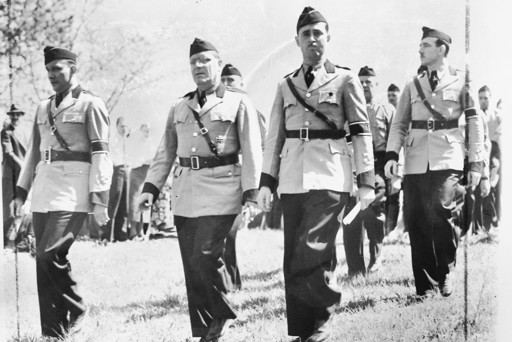
THE BUNDESFÜHRER—Fritz Kuhn,
second from left,
was the leader of the pro-Nazi German American Bund, the proud face of National Socialism in the United States. The Bund and its affiliates had enough public support to fill Madison Square Garden in February 1939. Within a year, Kuhn was convicted of embezzling from his own membership and sent to Sing Sing.
second from left,
was the leader of the pro-Nazi German American Bund, the proud face of National Socialism in the United States. The Bund and its affiliates had enough public support to fill Madison Square Garden in February 1939. Within a year, Kuhn was convicted of embezzling from his own membership and sent to Sing Sing.

THE DOUBLE AGENT—Wilhelm “William” Gottlieb Sebold, a native of Mülheim in the Ruhr Valley, was a peripatetic soul who became a US citizen in 1936. During a visit to his mother in Germany in 1939, he was coerced into the Abwehr but never carried out a single act on its behalf because he regarded his oath of allegiance to America as “a sacred thing.” He is pictured with his wife, Helen, also an American of German birth.
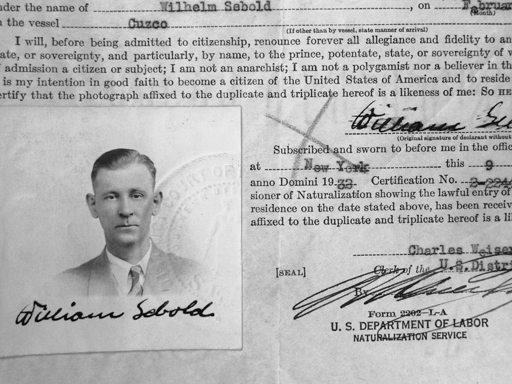
The photo attached to Sebold’s “Declaration of Intention” to become a US citizen.
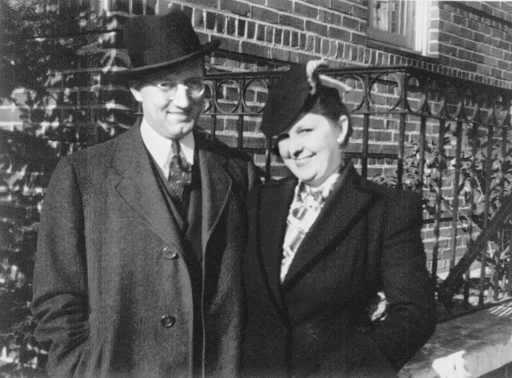
THE HANDLER—Special Agent Jim Ellsworth, pictured with his wife, Nell, was assigned to be Sebold’s handler or body man, responsible for shadowing his every move during the sixteen-month investigation. “It reads like a novel and I am the ace in the hole so am enjoying it immensely,” Ellsworth wrote in a letter to Nell.
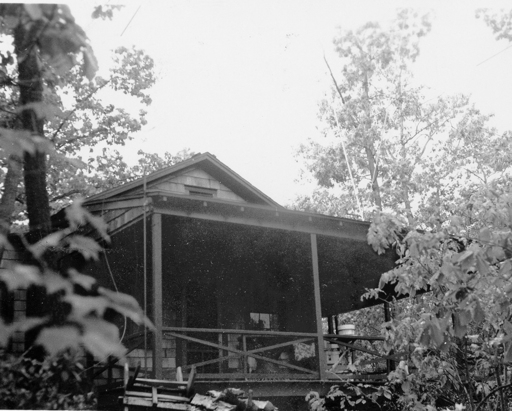
A RADIO STATION—The two-room cottage in Centerport on the north shore of Long Island housed the shortwave transmitter set up by the FBI to establish a communications link with Hamburg. A total of 468 messages—301 from Centerport to Hamburg; 167 from Hamburg to Centerport—were exchanged via a cipher system based on the letter arrangements in a bestselling novel,
All This, and Heaven Too
by Rachel Field.
All This, and Heaven Too
by Rachel Field.

Special Agent Richard Millen,
right,
was brought in from Washington to help launch the station.
right,
was brought in from Washington to help launch the station.
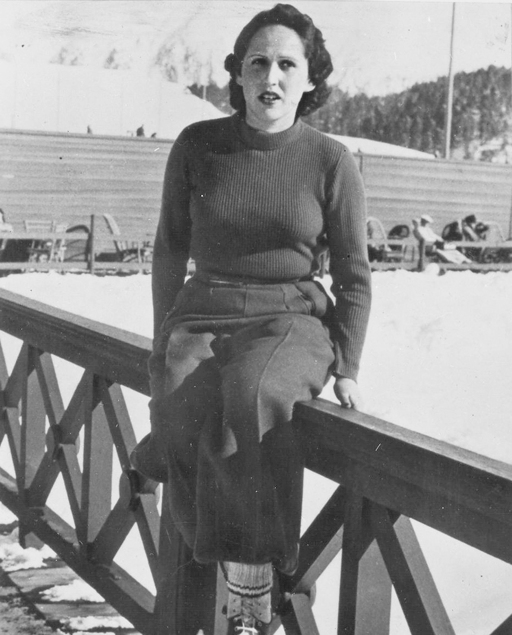
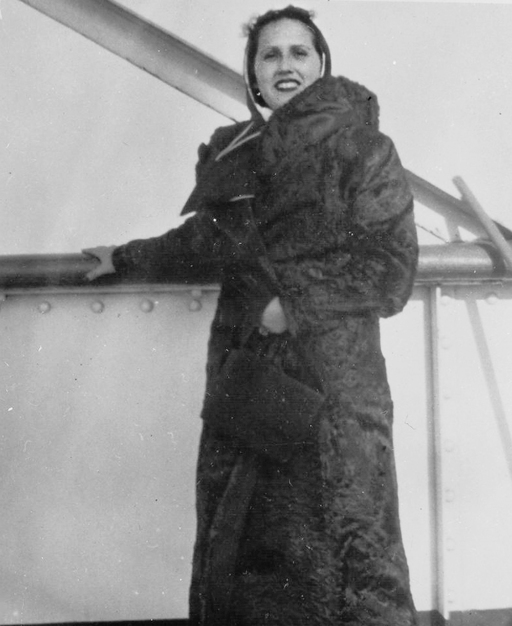
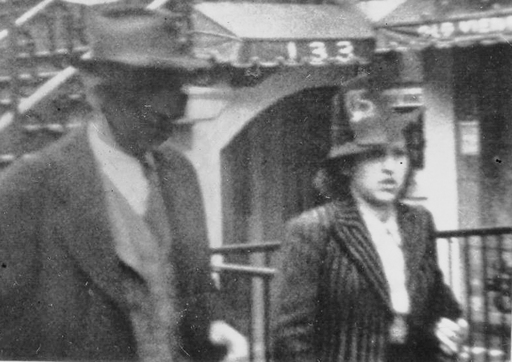
THE FEMME FATALE—A Jewish native of Vienna with connections among European high society, Lilly Stein was assigned by the Abwehr to hit Manhattan nightclubs in search of men who could whisper in her ear “about all sorts of war developments and deals in industry and finance,” as she later admitted. When Sebold spurned her amorous advances, she said, “Why is it you American men are always afraid of women?” At
left
, an FBI surveillance photo captures Stein walking near her midtown apartment with Sebold, whose face was obscured by the Bureau.
left
, an FBI surveillance photo captures Stein walking near her midtown apartment with Sebold, whose face was obscured by the Bureau.
Other books
Cloudy with a Chance of Boys by Megan McDonald
The Black Death in London by Sloane, Barney
Descending Surfacing by Catherine Chisnall
A Beautiful Rock by Lilliana Anderson
The Door in the Hedge by Robin McKinley
Sometimes We Ran (Book 1) by Drivick, Stephen
Boardwalk Empire: The Birth, High Times And Corruption of Atlantic City by Nelson Johnson
Playing Dead by Julia Heaberlin
Deep in You (Phoenix #1) by David S. Scott
Trojan Slaves by Syra Bond